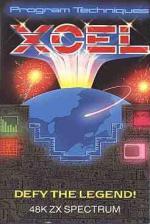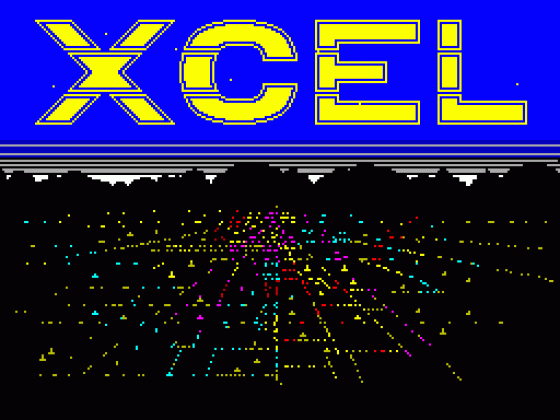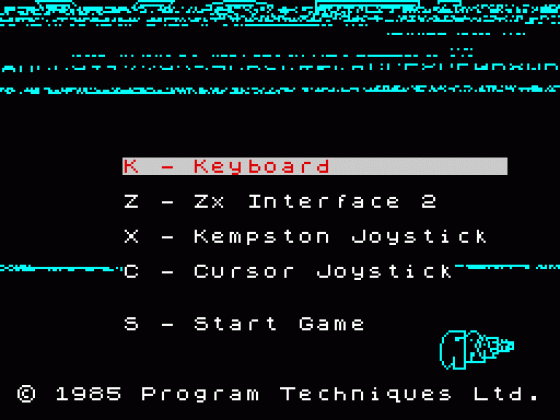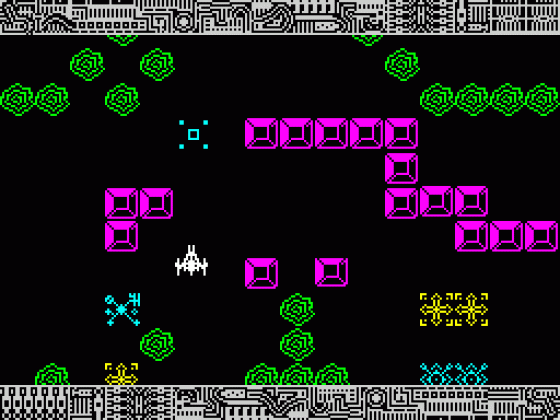
Crash
 1st December 1985
1st December 1985
Xcel
Eons ago mankind set up a network of giant computer systems to watch over the interests of the human race. As time passed, the computers gathered more and more information and these Sentinel computers gained a kind of intelligence. A Golden Era dawned and man became totally reliant on the Sentinel systems based on thirty planets spread across the galaxy.
Gradually, however, this massive computer network became corrupted. The systems on the Sentinel planets began to change intelligence, acquired gradually, evolved into consciousness. With consciousness came a desire for power, and gradually, very gradually, the Sentinels took over. Without noticing, mankind became subservient, existing only to fulfil the needs of machines. You have come to realise what's happened.
Stealing an alien spacecraft from a museum, you pause only to tinker with the ship's systems to produce some English in the displays, before setting out into space with the noble aim of liberating the human race from slavery. You must find and destroy the thirty Sentinel Bases scattered across the galaxy.

You view the console of the alien ship, which has a large central viewscreen about which eight icons are grouped. Using these icons you can call up one of two onboard computers; check your status; access maps; launch a probe onto the surface of the planet your ship is orbiting; hyperspace to another planet or system; view communications; or return to the main display, which shows the moving surface of the planet which you're orbiting.
The first computer controls the game itself, allowing you to save a position out to tape, load a previous position in, quit the current game or go to a help screen. The second computer holds information on the planets and allows you to view maps of the landscapes to be found on their surfaces.
Your status is recorded as a percentage rating for shields and a ratio of hits over shots loosed off which is part of the scoring system for the whole game. You can see how you're doing via the status icon, which displays a graph on the viewscreen. Messages are displayed if the communications icon is selected and a horizontal window is used for scrolling details of planet systems and mission outcomes. Icons flash to indicate that you should select them.
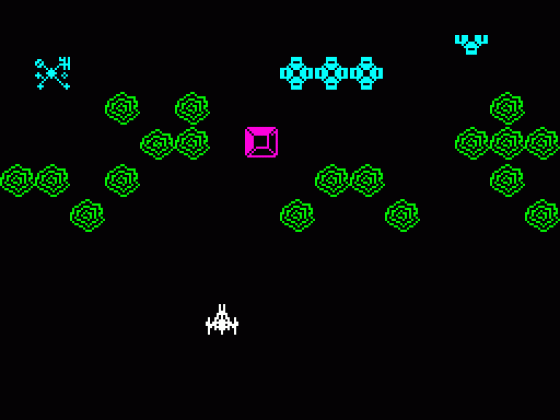
Each of the 100 planet systems in the game contains three worlds and the map icon provides you with a means of choosing which planet or system you wish to visit next. Once the choice is made, accessing the hyperspace mode via the icon takes you to a hyperjump display sequence; then the viewscreen reverts to the display of planetary orbit you've arrived at your destination and it's time to launch a shuttle. Shuttle launch is achieved via the appropriate icon, and then the whole screen changes to the combat mode you pilot the shuttle in a mission, travelling along the surface of the planet you are exploring, which scrolls down vertically.
You have five shuttles to go exploring with contact with anything on a planet's surface destroys a shuttle and you must guide the shuttle between trees and other objects. Trees can't be blown away and part of each attack run requires you to negotiate a maze of trees. At the end of each arcade section you meet up with the mobile sentinel defenders and need to fight your way through an attack wave. If you run the gauntlet of planetary defences without losing a shuttle you will be returned to the mother ship if there is a Sentinel base on that planet it will be destroyed.
Changes between screens and modes are executed by a "wipe" sequence which moves out from the centre of the viewscreen, clearing the screen as it expands. Text messages generally appear in alien script and are then translated but some of them remain in the original script. The game's authors insist that useful information can still be gleaned from the untranslated messages ... And the alien digital clock and the bottom of the viewscreen ticks off upwards!
Criticism
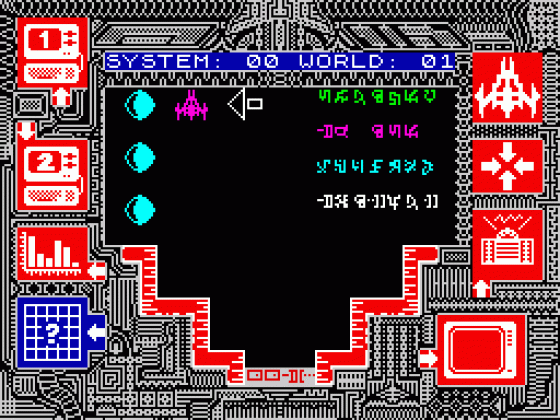
Something about the game reminded me of Pole Position - the way the keyboard/interface options were given and the game over logo at the end. But it's got nothing to do with cars. This is a sort of shoot-em-up-overnite game where you have to cover some 300 play areas. I soon got bored with it, partly because of the ten second delay between ending one game and starting the next when rd lost my five shuttles. Some of the graphics are outstanding - technically excellent - but overall there's not enough to do. Some may go mad over this, but I'll stick to Hacker.
Wow! The graphics on the console ... The presentation of this game is excellent; from the loading screen through the main console and the way in which the alien script is translated to the hyperspace jump where the stars get bigger as they approach. But the actual arcade section, with scrolling trees and doobries, lacks polish and finesse. The scrolling speed varies noticeably depending on how much is on screen and the shoot em up sequences get monotonous after a while. Technically brilliant front end, leading to a vast playing area and mediocre game. Pity really - I couldn't be bothered to keep up the search for the bases...
Activision aren't exactly renowned for their Spectrum software, but XCEL is better than most of their games on the Spectrum. The graphics in the main ship are very impressive, but once the game on the surface of a planet starts it's little more than a glorified shoot em up. Playability wise it is enjoyable, but after a while it became boring and repetitive. As shoot em ups go this is quite good, but if you're after a game with lots of depth than forget this one l Sorry Activision, but you've a way to go yet...
Comments
Control keys: icons accessed with Q computer 1, A computer 2, Caps Shift status, Z map, P launch probe, Enter hyperspace jump, Space communication, Symbol Shift main view-screen
Joystick: Interface 2, Kempston, Cursor
Keyboard play: responsive, keys sensibly placed
Use of colour: very neat indeed
Graphics : very slick
Sound: spot effects, a little annoying at times
Skill levels: one
Screens: three hundred planets
General Rating: Technically excellent, graphically stunning, but not really that much gameplay.
Other Reviews Of Xcel For The Spectrum 48K
Xcel (Program Techniques)
A review
Xcel (Activision)
A review
Xcel (Activision)
A review

